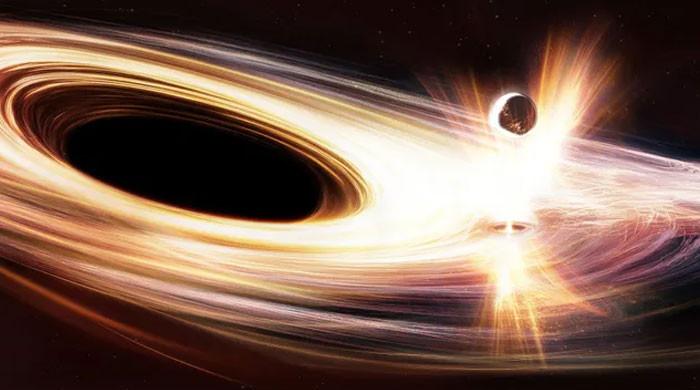China marks scientific breakthrough with lunar samples from Chang'e 5 probe
Researchers closely inspected samples collected by China’s Chang’e-5 probe, which landed on lunar surface in 2020
August 06, 2024

Chinese scientists who analysed lunar soil samples, that were collected by China’s Chang’e-5 probe in 2020, made a groundbreaking doscovery as they found water in its molecular form, H2O, along with minerals in the soil.
While water has previously been observed on the moon's surface before, this is the first time it has been found in physical samples, collected from an area where it was previously thought not to exist, CNN reported.
Researchers closely inspected samples collected by China's Chang'e-5 probe and found a "prismatic, plate-like transparent crystal" that was in fact an "unknown lunar mineral" dubbed ULM-1, CNN reported citing the study, which was published last month in the journal Nature Astronomy.
The ULM-1 crystals are made up of roughly 41% water, with bits of ammonia that keep that the H2O molecules stable despite wild temperature swings on the moon, according to the study.
This type of water could be a potential "resource for lunar habitation," the scientists wrote in their study.
This finding adds a new dimension to humans' understanding of water sources beyond Earth and has the potential to impact future lunar exploration.
Yuqi Qian, a planetary geologist at the University of Hong Kong, has discovered three types of water on the moon: H2O, its frozen form, ice, and a molecular compound called hydroxyl, a close chemical relative.
Previous discoveries suggest that water existed on the moon during ancient volcanic eruptions, and that lunar water came from those volcanoes.
However, people didn't always know about water's existence, and scientists theorised about its existence for hundreds of years.
Researchers initially believed the moon was dry, especially after not finding water in samples collected by the National Aeronautics and Space Administration's (Nasa) Apollo missions and the Soviet Union's Luna missions.
It was only in more recent years that scientists found water, ice and water molecules mostly located at the dark, cold lunar poles where the sun doesn’t reach.











